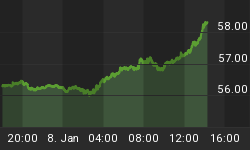Only a fraction of cryptocurrency transactions are used for illegal activity, but nearly all illegal transactions are done in the dark digital realm, and funding terrorism is made relatively easy. Last year, Washington-based Middle East Media Research Institute (MEMRI) reported that ISIS, Al-Qaeda, the Muslim Brotherhood, Hamas and other militant groups were using several social media platforms, including Telegram, to raise funds via cryptocurrencies.
And they are anything but shy about where the money was going and for what purpose.
In its 2018 report, Europol revealed that members of the terrorist organization ISIS seem to enjoy Zcash, noting that ISIS requested donations in Zcash and Bitcoin to purchase website domains “in their efforts to recruit, fundraise, and organize attacks.”
And now, the Israeli International Institute for Counter-Terrorism (ICT) claims that the Palestinian militant group al-Nasser Brigades (AQB) has managed to bring in a total of $29 million via donations.
AQB, the military wing of the Popular Resistance Committees (PRC), is said to have received millions in the BTC fundraising campaign after Iran rejected the group's request for financing assistance.
The report claims the group – which the Israeli media says has links to Hamas – used bitcoin to avoid sanctions and offer a degree of anonymity to donors from overseas. The group’s wallet had in the last four years received a total of nearly 3,370 BTC, which totals almost $29 million in today’s prices.
Methods are becoming increasingly sophisticated, according to Chainalysis, a research agency that tracks digital transactions for law-enforcement.
The Israeli ICT claims that AQB used a website to create a fresh Bitcoin address for every donor to send funds, and also employed a detailed video explaining how donors could remain anonymous. Those sophisticated moves allegedly helped AQB raise the same amount of money in half the time, as well as attracting more donors through security of anonymity.
Related: SoftBank Sees First Quarterly Loss In 14 Years
Cryptocurrency has been linked to other criminal activities as well, including Ponzi schemes, extortion, theft, and money-laundering. And the currency of choice is bitcoin--hands down. According to one analysis, bitcoin accounts for 95% of illicit cryptocurrency transactions.
A CipherTrace blockchain forensics report for 2019 said that cryptocurrency theft had skyrocketed, year-over-year, with losses from digital currency crime hitting $4.4 billion in the first nine months of the year. That’s a 150% increase over the first nine months of 2018.
Last summer, the Financial Action Task Force, which provides crypto guidance for some 200 countries, began requiring exchanges to collect more data about their customers and also to start sharing that data with their peers in fund-to-fund transfers.
In 2018, the U.S. House of Representatives passed a bill that would establish a crypto task force to combat terrorist use of cryptocurrencies, and the UK government followed suit, increasing regulatory requirements for digital currencies.
Earlier this month, the UK Financial Conduct Authority (FCA) assumed charge of control of cryptocurrency asset oversight — specifically, oversight of anti-money laundering (AML) and counter-terrorist financing (CTF) activities.
In the U.S., cryptocurrency is also highly popular among domestic extremists, and among neo-Nazi organizations, in particular. A 2017 study by the Anti Defamation League (ADL) claims that American supremacy groups tend to be decentralized--not highly organized--and often rely on crypto, which speaks loudly to their decentralization sentiments.
The bottom line is this: There is no way for anonymity to live separately from a criminal bonanza, just as there has never been a way to allow democracy without allowing freedom of speech. The trick is in law-enforcement capabilities that do not undermine the basic tenets of privacy and freedom. No one knows what that is--yet.
By Michael Scott for Safehaven.com
More Top Reads From Safehaven.com:


















Privacy is the main important thing I think.